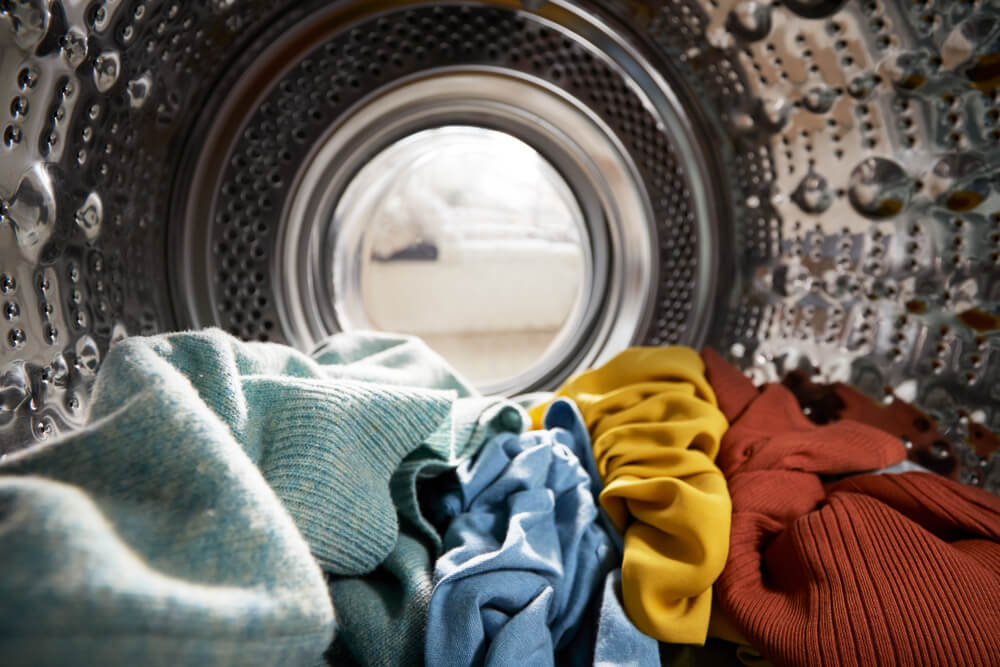Per the U.S. Bureau of Labor Statistics (BLS), the average American household spends about $1,700, or about 3.5% of its household budget, on apparel and related services every year. Fortunately, you can cut this cost significantly simply by ensuring you do not damage or stain your clothes while doing laundry, thus ensuring your clothes last longer. Here are some handy tips on how to prevent stains or damage to clothing when doing laundry.
Mastering Washer and Drier Settings
Washers have three functions that affect your laundry: cycle length, cycle speed, and water temperature. Cycle length is the period within which the machine washes your clothes. Shorter cycles are ideal for delicate and less soiled clothing while longer cycles are suitable for bulky and heavily soiled items. The less time your garments spend in the washer, the better, so always go for the shortest cycle possible.
Cycle speed is the force and speed at which your garments are spun in cycles and stirred up in the wash. Cycle speeds are often categorized as “delicate”, “permanent press”, and “regular”. These terms translate to “slow/slow”, “fast/slow” or “fast/fast”. In a regular cycle, both the wash cycle – when detergent and water are introduced – and spin cycle – which squeezes water from your clothes after rinsing – are fast. This is the ideal cycle speed for bulky items. Permanent press is fast/slow, which translates to a fast wash cycle and a slow spin cycle. This makes it ideal for fabrics that wrinkle easily, as a slower spin cycle limits wrinkles. This is the best choice for most of your laundry. Delicate cycle is slow /slow and thus ideal for items with embellishments and delicate fabrics.
Use Cold Water
With advances in washing machine design and detergent formulation, you can now wash all your laundry using cold water. Compared to warm and hot water, cold water doesn’t take as much of a toll on your textiles, and so your items, from your expensive sheets to your favorite sweater, will serve you for longer. Also, it conserves energy, which, in turn, saves you money, according to an article published by the New York Times.
Use the Right Dryer Setting
Typical dryer settings include regular, permanent press, delicate, and tumble dry options. Regular is the uppermost heat setting. It’s only ideal for towels, sweatshirts, and other bulky items. Permanent press is a medium setting that has a cool-down period that’s meant to reduce wrinkling. This is the ideal option for most sheets and clothes. Delicate is a low heat setting that’s ideal for shrink prone-materials like linens and wools and delicate cotton, as well as items that contain any form of elastic. Tumble dry is a no-heat setting that’s ideal for fine textiles and clothes that have embellishments.
Laundering Problems and Solutions
- Close Zippers and Clip Bras
One of the key tenets of clothing maintenance is that you should close zippers before you machine wash your clothing. Loose zippers can rip delicate clothing and scratch your washer’s doors. Unclipped bras can damage the drum as well as pull fabrics, according to a recent article published by the Reader’s Digest.
- Follow Laundry Instructions
Unless you’re a seasoned laundry expert, you should always pay particular attention to the laundry instructions on clothing labels. For example, if the care label says wash in cold water or dry clean only, ensure you do that.
Use these tips to prevent stains or damage to clothing when doing laundry. Are you ready to save time, stress less, and complete all your laundry in a matter of minutes? Give the team at Fresh & Clean Laundry a call to learn about our services and about how we can help. As your friendly and efficient laundry team in California, we hope to see you soon!
Comments are closed.


